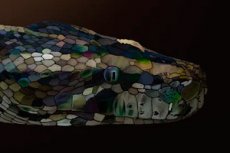Medical expert of the article
New publications
First aid in case of snake bite
Last reviewed: 04.07.2025

All iLive content is medically reviewed or fact checked to ensure as much factual accuracy as possible.
We have strict sourcing guidelines and only link to reputable media sites, academic research institutions and, whenever possible, medically peer reviewed studies. Note that the numbers in parentheses ([1], [2], etc.) are clickable links to these studies.
If you feel that any of our content is inaccurate, out-of-date, or otherwise questionable, please select it and press Ctrl + Enter.

The bite of a common grass snake, which is a non-venomous reptile, is not life-threatening, but first aid for a bite of a poisonous snake, most often a viper, includes several rules aimed at slowing the spread of poison, which, as a result, helps reduce intoxication.
Non-venomous snake bite
Experts believe that after a bite from any snake, you should go to the hospital - to the emergency department, since identifying a snake as poisonous or non-poisonous, especially when a person did not have time to examine the snake or simply does not know what species it is, is most often problematic.
A bite from a non-venomous snake, such as a grass snake or copperhead, requires proper wound care, and as first aid, you should wash the bite site with soap and water, and then treat the wound with an antiseptic. The medical facility should administer an anti-tetanus serum, that is, give a tetanus shot (if five or more years have passed since the previous administration). [ 1 ]
What to do if bitten by a poisonous snake?
Another matter is the bite of the common viper, whose venom contains hemotoxins that cause the destruction of red blood cells and hemorrhages, polypeptide toxins and enzymes that disrupt cell function and lead to muscle tissue necrosis and organ damage. The effect on the nervous system can be felt locally (as numbness) or systemically (loss of consciousness). The accumulation of dead red blood cells can also disrupt normal kidney function.
Most snake bites occur on the extremities; at the site of the bite of a poisonous snake, severe burning pain appears, swelling, erythema and hematoma form. More details in the publication - Signs of a viper bite in humans.
According to the World Health Organization Guidelines for the Management of Snake-Bites, [ 2 ], [ 3 ] first aid for a venomous snakebite includes the following actions:
- Call an ambulance as soon as possible. This is especially important when providing first aid for a snake bite to a child, since his body weight is smaller and the systemic effect of the poison occurs more quickly.
- Remove jewelry and tight clothing before the snakebitten arm or leg begins to swell.
- Position or arrange the victim so that the bite is at or below the level of the heart: this may reduce the spread of the venom and delay its systemic toxicity.
- Clean the wound quickly (with soap and running water and/or an antiseptic solution) and cover with a sterile, loose dressing. This is recommended by the American Red Cross.
- The bitten limb should not be moved, as the poison spreads via the lymph flow, and muscle contractions accelerate lymph flow. Therefore, it is necessary to immobilize the limb by applying a wide, dense bandage to the bite site. It is also recommended to apply another layer of bandage with a splint (fixing the joints closest to the bite site); the bandage should be applied starting from the fingers (hands or feet) upwards – to the maximum surface of the limb. This measure is designed to block lymphatic drainage (the splint prevents skeletal muscle contraction) while maintaining arterial and venous circulation. The bandage should clearly indicate the bite site, the date and time of the snake bite.
- Drink more water.
It is very important to get the bitten person to a hospital as quickly as possible so that they can receive medical care. [ 4 ] For more information, see – Treatment for poisonous snake bites: Antivenom.
What should not be done in case of snake bites?
When providing first aid for a poisonous snake bite, a tourniquet should not be applied, as complications from stopping the blood flow to the limb can cause serious problems associated with increased local tissue destruction by snake venom, as well as limb ischemia and the risk of developing gangrene. According to recommendations of the World Health Organization, arterial tourniquets are contraindicated for snake bites. [ 5 ]
Avoid putting ice on the bite or burning it, and avoid drinking beverages containing alcohol or caffeine.
Cutting the wound to remove the venom or trying to suck the venom out of the bite site is also not allowed. Cutting increases the risk of infection, and sucking out the bite site does not remove the venom. According to research, aspiration of venom during its suction (three minutes after the bite) does not exceed 0.04-2% of that entering the tissue, and toxicologists consider this amount clinically insignificant. [ 6 ]
Additionally, suction can actually increase local tissue damage by introducing bacteria into the wound, so it is no longer recommended by medical professionals, but is still present in many publications.

